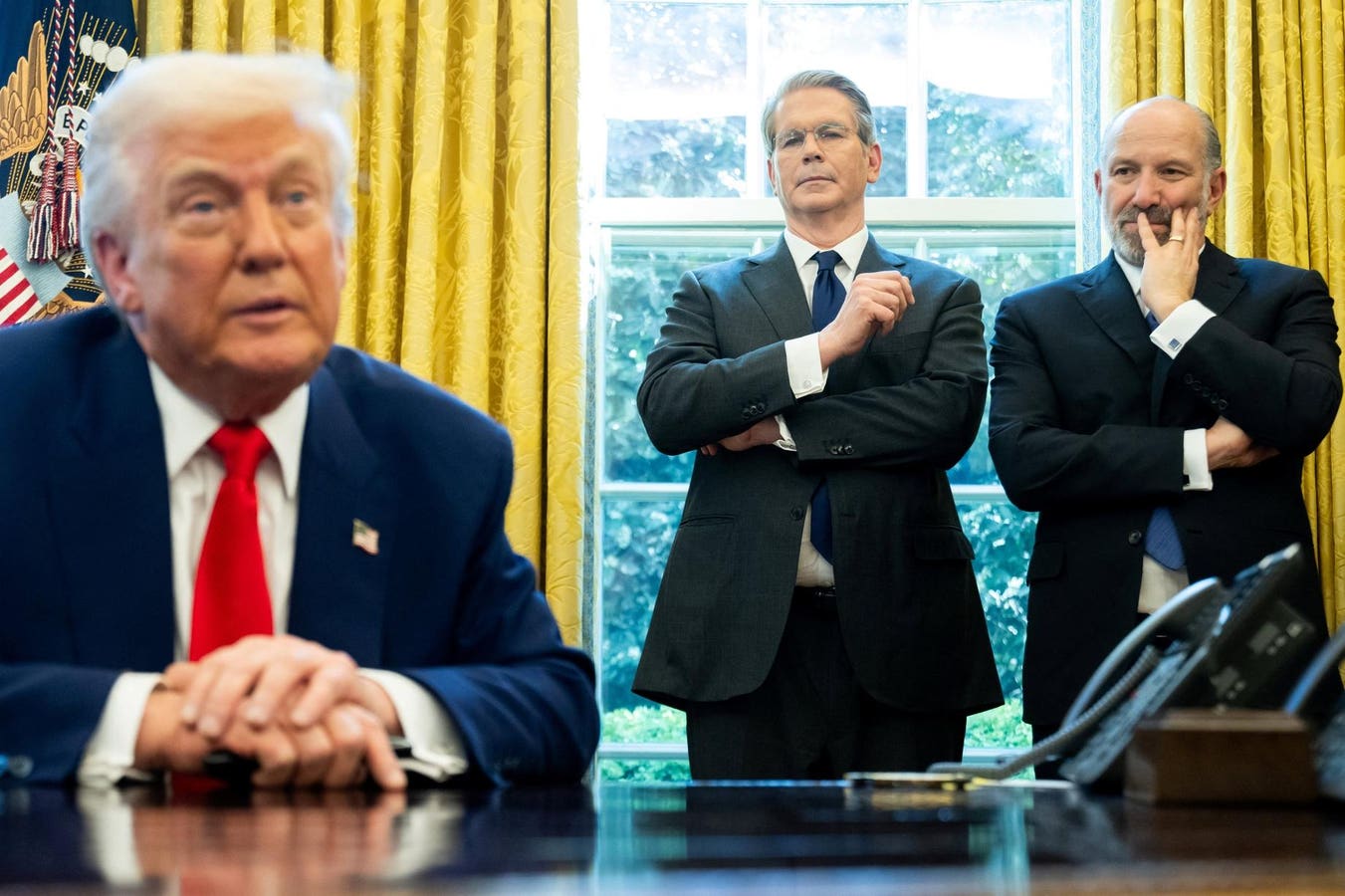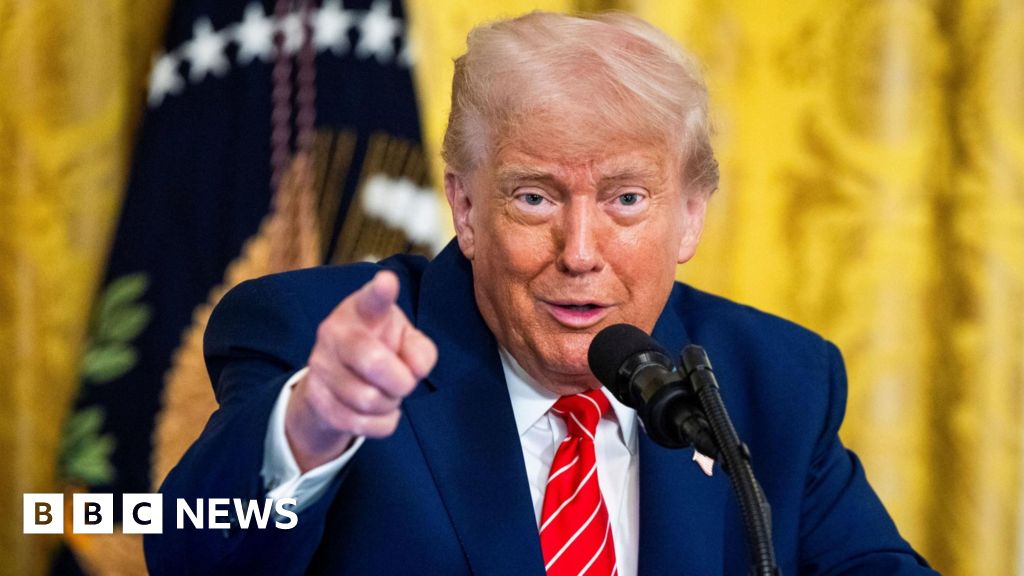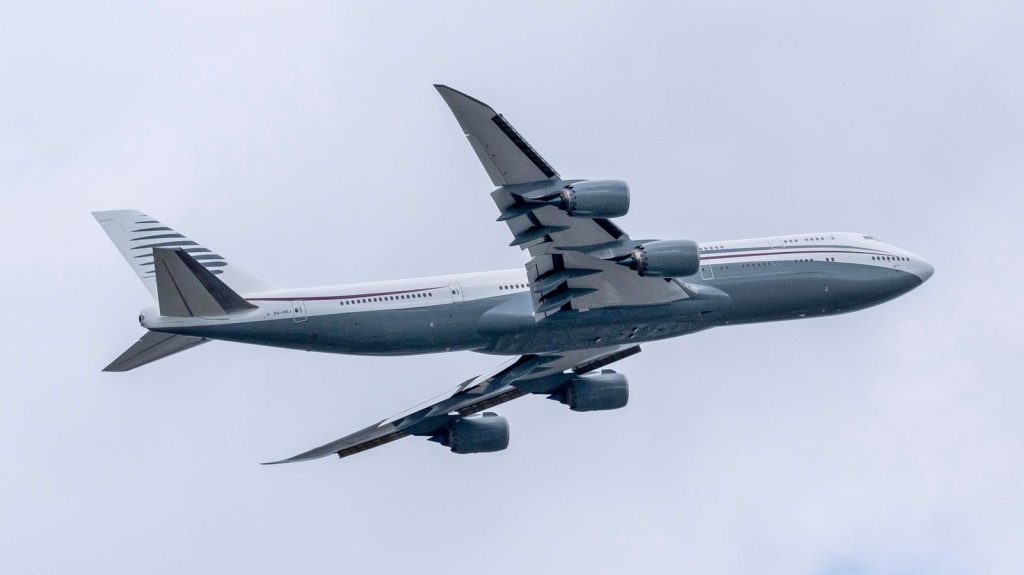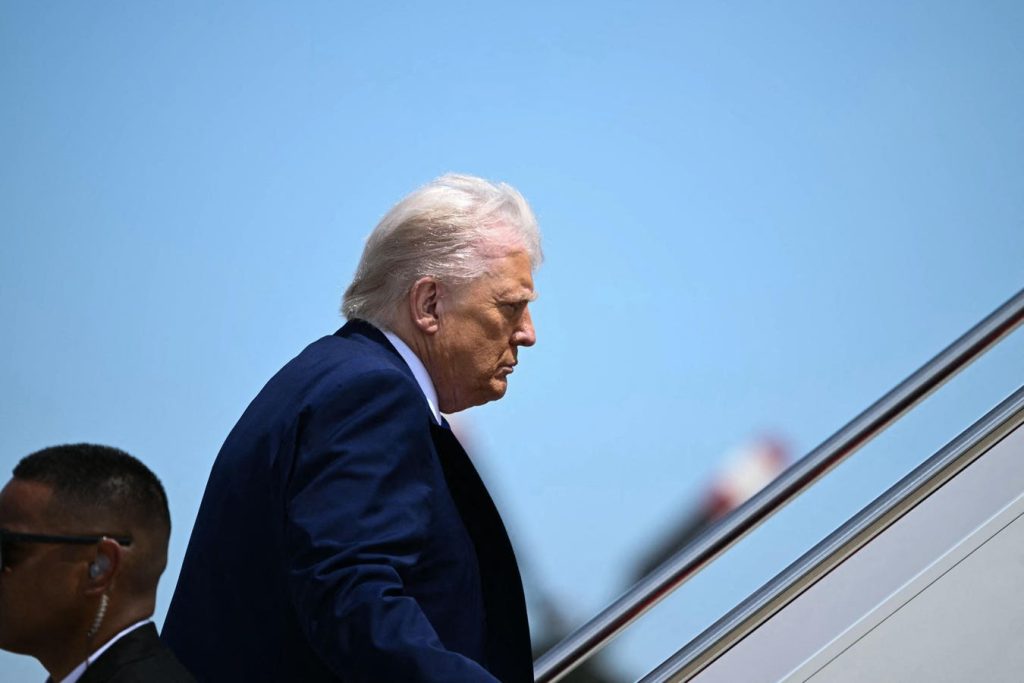President Donald Trump suggested Tuesday he’s considering “substantially” lowering tariffs on Chinese imports—the latest backtracking the Trump administration has done on its sweeping tariffs, as the White House has frequently flip-flopped in the weeks since “Liberation Day,” raising questions about how much is actually going to plan.
Feb. 7Trump made his first public comments about imposing sweeping tariffs on foreign imports—after already announcing separate tariffs on goods from China, Canada and Mexico—telling reporters he wanted reciprocal tariffs that match the duties countries levy on American goods, saying he wants to make sure “we’re treated evenly” and that “we don’t want any more, any less.”
Feb. 13Trump signed a memorandum directing his administration to fix its “non-reciprocal trade arrangements” with other countries by “determining the equivalent of a reciprocal tariff with respect to each foreign trading partner,” taking into account what tariffs a country levies on American goods, but also related costs like value-added taxes and nontariff trade barriers like regulations that make it harder for the U.S. to import their goods.
March 31White House Press Secretary Karoline Leavitt told reporters there would be “no exemptions at this time” to Trump’s impending tariffs on foreign goods.
April 2Trump rolled out his tariff policy at a “Liberation Day” event at the White House, releasing details of the plan that showed nearly all countries (even uninhabited ones) facing tariffs ranging from 10% and 50%—but the Trump administration appeared to calculate by just dividing a country’s trade surplus with the U.S. by its export value, rather than the more sophisticated formula the administration claimed (flip-flop No.1 ).
Contrary to Leavitt’s March 31 comments, the executive order imposing the tariffs exempted “copper, pharmaceuticals, semiconductors, lumber articles, certain critical minerals, and energy and energy products” (flip-flop No. 2).
Trump also backtracked on his previous commitment for the U.S. to charge reciprocal tariffs matching the ones other countries impose on American goods, saying in his speech the administration would instead “charge them approximately half of what … [other countries] have been charging us, so the tariffs will be not a full reciprocal,” adding, “I could have done that, I guess, but it would have been tough for a lot of countries and we didn’t want to do that” (flip-flop No. 3).
April 3, 4 p.m. EDTTrump trade adviser Peter Navarro denied to CNBC that Trump intended to negotiate his tariffs with other countries—saying, “This is not a negotiation. This is not that. This is a national emergency”—after Lutnick told CNN earlier that day Trump was “not going to back off” his tariffs.
April 3, 5 p.m. EDTTrump told reporters aboard Air Force One he was open to negotiating the tariffs—less than an hour after Navarro’s comments—saying the U.S. has “great power to negotiate” because of the tariffs and he was open to making a deal “if somebody said that we’re going to give you something that’s so phenomenal, as long as they’re giving us something that’s good” (flip-flop No. 4).
April 4, 8:44 a.m. EDTTrump insisted he wouldn’t back off his tariff policy, writing on Truth Social, “TO THE MANY INVESTORS COMING INTO THE UNITED STATES AND INVESTING MASSIVE AMOUNTS OF MONEY, MY POLICIES WILL NEVER CHANGE.”
April 6, 9-11:30 a.m. EDTMultiple Trump advisers suggested on Sunday shows Trump will not back off his tariffs for the foreseeable future, with Treasury Secretary Scott Bessent telling “Meet the Press” the tariffs are “not the kind of thing you can negotiate away in days or weeks” and Lutnick telling CBS News “there is no postponing” the tariffs taking effect.
Trump aides also suggested the president was open to negotiations, however, with White House economic adviser Kevin Hassett telling ABC News “more than 50 countries” have reached out about starting talks, while Bessent said negotiations were “gonna be a decision for President Trump, but … he’s created maximum leverage for himself” (flip-flop No. 5).
Lutnick seemingly doubled down on tariffs being imposed on smartphone imports, despite the tariffs causing Apple’s stock price to decline, telling CBS, “The army of millions and millions of human beings screwing in little, little screws to make iPhones, that kind of thing is going to come to America.”
April 7, 11:14 a.m. EDTTrump threatened additional 50% tariffs on China in response to Beijing retaliating against his tariffs and said “all talks” with the country’s government “will be terminated,” but said his administration would begin tariff negotiations “immediately” with other countries that have reached out—with Bessent then confirming shortly after the president had directed him to begin negotiations with Japan.
April 7, 3 p.m. EDTSpeaking to reporters in the Oval Office, Trump said he was “not looking at” pausing his tariffs, and, when asked if his tariffs were permanent or if they could be negotiated, said, “Both can be true,” adding, “There can be permanent tariffs, and there can also be negotiations.”
The president also insisted he would move forward with his tariff agenda despite them roiling the stock market, saying, “No other president would be willing to do what I’m doing,” but “I don’t mind going through it because I see a beautiful picture at the end.”
April 8Trump trade representative Jamieson Greer testified to the Senate Finance Committee the White House “will have the president’s plan go into effect” on April 9 as scheduled—denying there would be any delay—but the government was “coupling that with immediate negotiations.”
April 8, 1 p.m. EDTLeavitt told reporters during a press briefing that Trump has directed his trade team to “have tailor-made trade deals with each and every country that calls up this administration to strike a deal,” and emphasized Trump intended to bring manufacturing of tech products to the U.S., saying the president “absolutely” thinks iPhones and other products could be made in the U.S. and Trump “believes we have the labor, we have the workforce, we have the resources to do it.”
April 9, 9:33 a.m. EDTTrump told Americans to “BE COOL” after the stock market plunged in response to his tariffs taking effect at 12:01 a.m. EDT, writing on Truth Social, “Everything is going to work out well,” and later urging Americans to buy stock and for companies to move their operations to the U.S.
April 9, 1:18 p.m. EDTIn a stunning about face, Trump announced on Truth Social he was pausing the worst of his tariffs on most countries for 90 days, though he would continue a baseline 10% tariff rate and raise his tariffs on most Chinese goods by 125%. (flip-flop No. 5).
Trump officials suggested immediately after his announcement the pause was part of the president’s negotiating strategy, with Bessent telling reporters, “This was his strategy all along” and Trump “goaded China into a bad position,” while Leavitt told reporters, “Many of you in the media clearly missed the art of the deal.”
The president almost immediately contradicted those comments, telling reporters later Wednesday he had decided to pause the tariffs because “people were jumping a little bit out of line. They were getting yippy,” also saying his plan to pause the tariffs “probably came together early this morning,” after the tariffs had taken effect (flip-flop No. 6).
April 9, 3 p.m. EDTTrump also told reporters in the Oval Office he still intends to impose additional tariffs on pharmaceuticals as well as semiconductor chips, saying the U.S. will build a chips factory that “will be one of the largest plants in the world” and everything needed in order to approve it will be “done in a matter of months.”
April 10, 11 a.m. EDTTrump stood by his tariff policy as markets went down again after an initial rally in response to the 90-day pause, saying at a Cabinet meeting, “We think we’re in very good shape. We think we’re doing very well. Again, there’ll be a transition cost and transition problems, but in the end, it’s going to be a beautiful thing.”
April 11, 5 p.m. EDTTrump told reporters on Air Force One he thinks his 10% baseline tariff rate is likely “the floor,” though there “could be a couple of exceptions,” also saying he’s “very comfortable now” with at least 145% tariffs on Chinese imports while still leaving room for negotiations.
April 11, 10:36 p.m. EDTU.S. Customs and Border Protection issued “Reciprocal Tariff Exclusion” guidance saying smartphones, computers and other electronic devices were now exempt from the tariffs, countering the previous statements from Trump and his officials suggesting they wanted to move such manufacturing to the U.S. (flip-flop No. 7).
April 12The White House said in response to the exemption on tech products the administration still wants to move manufacturing of those products to the U.S., with Leavitt saying in a statement, “President Trump has made it clear America cannot rely on China to manufacture critical technologies such as semiconductors, chips, smartphones, and laptops … these companies are hustling to onshore their manufacturing in the United States as soon as possible.”
Trump told reporters on Air Force One on Saturday that he intended to issue more guidance on his approach to semiconductor tariffs on Monday.
April 13, 9 a.m. EDTLutnick told ABC’s “This Week” the exemption on semiconductors and other goods is only temporary, claiming Trump is still crafting tariffs on tech goods and pharmaceuticals that will be rolled out “in probably a month or two.”
April 13, 3:36 p.m. EDTTrump claimed on Truth Social that contrary to the customs announcement, there was “no Tariff ‘exception’ announced on Friday” and the tariffs on smartphones and other goods are “just moving to a different Tariff ‘bucket,’ adding his administration will be “taking a look at Semiconductors and the WHOLE ELECTRONICS SUPPLY CHAIN in the upcoming National Security Tariff Investigations” (flip-flop No. 8).
Later in the day, Trump told reporters aboard Air Force One that he would soon announce tariff rates for chips, semiconductors and pharmaceuticals, also promising that tariffs would be restored for electronics “very soon,” but he would also “talk to companies,” arguing, “You have to show a certain flexibility. Nobody should be so rigid.
April 15, 1 p.m. EDTLeavitt told reporters the White House is “actively” considering “more than 15 deals” on trade with other countries, though she declined to give any details on any specific countries or trade deals.
April 17, 4 p.m. EDTTrump told reporters his administration is “going to make a deal with everybody” on trade and he thinks the deals will be “concluded” “over the next three or four weeks,” adding, “At a certain point, if we don’t make a deal we’ll just set a limit, we’ll set a tariff … and we’ll say, ‘Come in and shop.’”
Trump also told reporters that day he’ll “make a very good deal with China” and he’s “100 percent” sure the U.S. can make a trade deal with the European Union, adding he’s “in no rush” to announce deals with specific countries.
April 22, 4 p.m. EDTTrump told reporters he won’t play “hard ball” with China in their tariff negotiations and floated that he could lower his punishing 145% tariff rate on Chinese imports, saying it is “very high” and the rate will “come down substantially, but it won’t be zero”—contradicting his previous comments that he’s “comfortable” with where the tariffs now stand (flip-flop No. 9).
April 23, 9:58 a.m. EDTIn line with Trump’s April 22 comments, The Wall Street Journal reported the Trump administration is considering significantly lowering its tariffs on Chinese goods, likely to between 50% and 65%, or at a tiered rate based on the type of product.
April 23, 11 a.m. EDTBessent then countered Trump’s comments about lowering China’s tariffs, telling reporters Trump had not made any offer to unilaterally lower the tariff rate on Chinese goods—though he added, “I don’t think either side believes that the current tariff levels are sustainable, so I would not be surprised if they went down in a mutual way.”
“Look, I’m a very flexible person. I don’t change my mind, but I’m flexible,” Trump told reporters on April 14 after suggesting he could pause his tariffs on automobiles, which were imposed separately from his “Liberation Day” fees. “And you have to be. You just can’t have a wall. Sometimes you have to go around it, under it or above it.”
How much further the Trump administration’s positions could shift. FOX Business reported April 13 there’s “significant division” within the White House over Lutnick’s comments that the tariff exemptions are temporary—though that was prior to Trump doubling down on that on Truth Social—and it remains to be seen if further tariffs on critical imports like semiconductors will be imposed in a month or two as the commerce secretary and Trump have claimed. It also remains to be seen how trade negotiations with dozens of countries will play out over the next few months during the 90-day pause on Trump’s tariffs, and if any countries will have the 10% baseline tariff rate lifted altogether. While Trump has suggested he wants to lower China’s tariffs, it’s also still unclear how any trade negotiations with the country will play out, as Beijing has not shown any sign of yielding to Trump. “If the U.S. truly wants to resolve issues through dialogue and negotiation, it should stop making threats and resorting to coercion,” Chinese Foreign Ministry spokesperson Guo Jiakun said Wednesday, as translated by Reuters. “Saying they want to reach an agreement with China while continuing to apply maximum pressure is not the right way to deal with China, and it will not work.”
Democrats have decried the constant changes in Trump’s tariff policy, which they argue further harm the economy. “The White House has no idea what it’s doing on tariffs and keeps flip flopping. Lutnick now says the tariff exemptions on, for example iPhones, are temporary. Why even do an exemption if you’re going to reverse it soon?” Rep. Ted Lieu, D-Calif., said on X on April 13. The White House “has no strategy, and is rapidly losing credibility.”
Trump has long touted tariffs as a cornerstone of his policy agenda, making them a centerpiece of his campaign and repeatedly pledging to put them in effect. His flip-flopping on the “Liberation Day” tariffs comes after Trump previously shifted his stance in how he handled tariffs on Mexico and Canada, initially announcing hours after his inauguration that he would impose 25% tariffs on Canada and Mexico on Feb. 1, which briefly took effect before he ultimately paused them for 30 days on Feb. 3. The tariffs then took effect again on March 4, though Trump later paused tariffs on automobiles and exempted many products from the tariffs on March 6. Trump has charged forward with his tariff plans despite longstanding warnings from economists that doing so would raise prices for American consumers and harm the economy, which have played out as the tariffs have taken effect, roiling the stock market and leading economic experts to warn of a looming recession.











